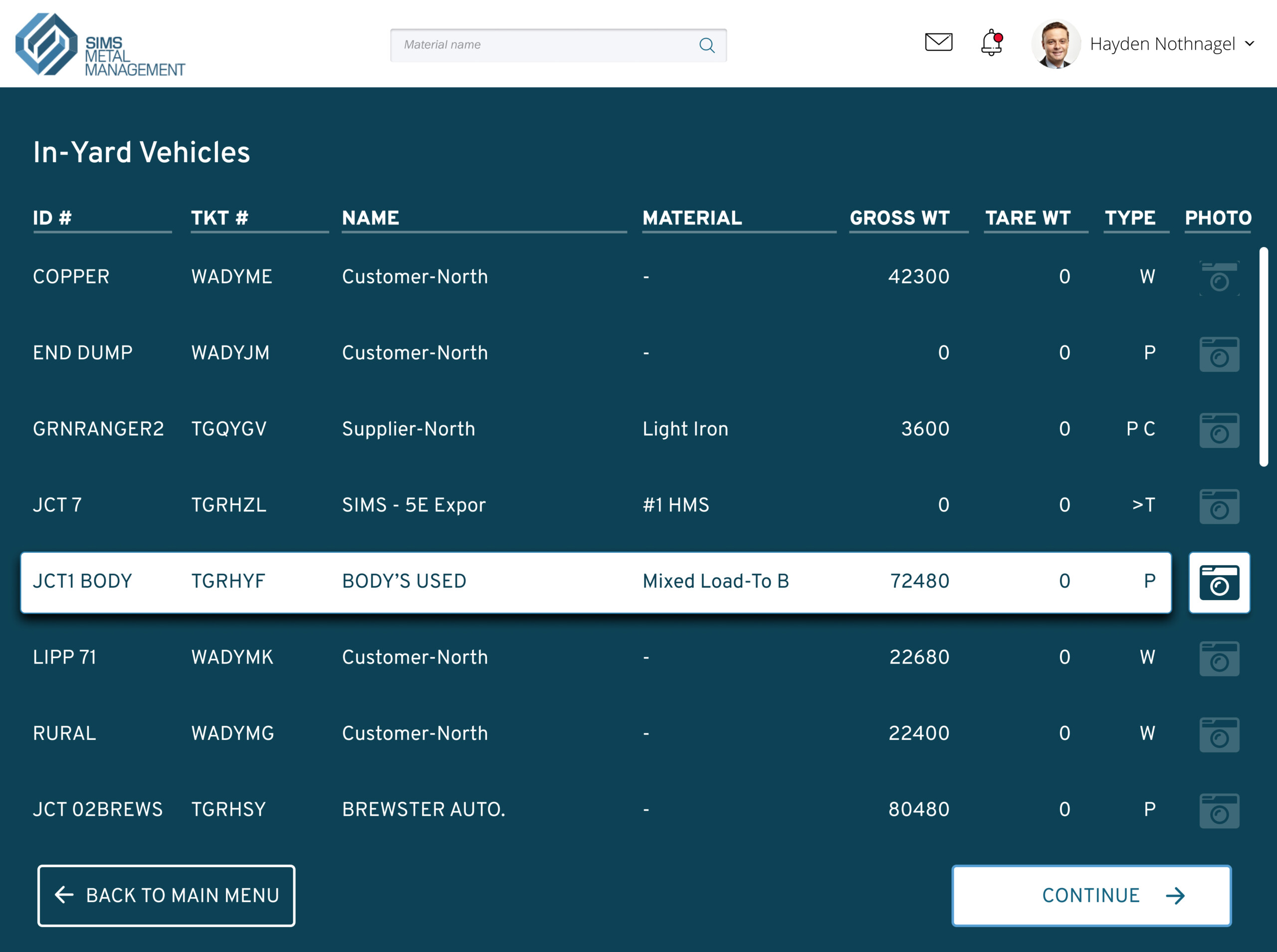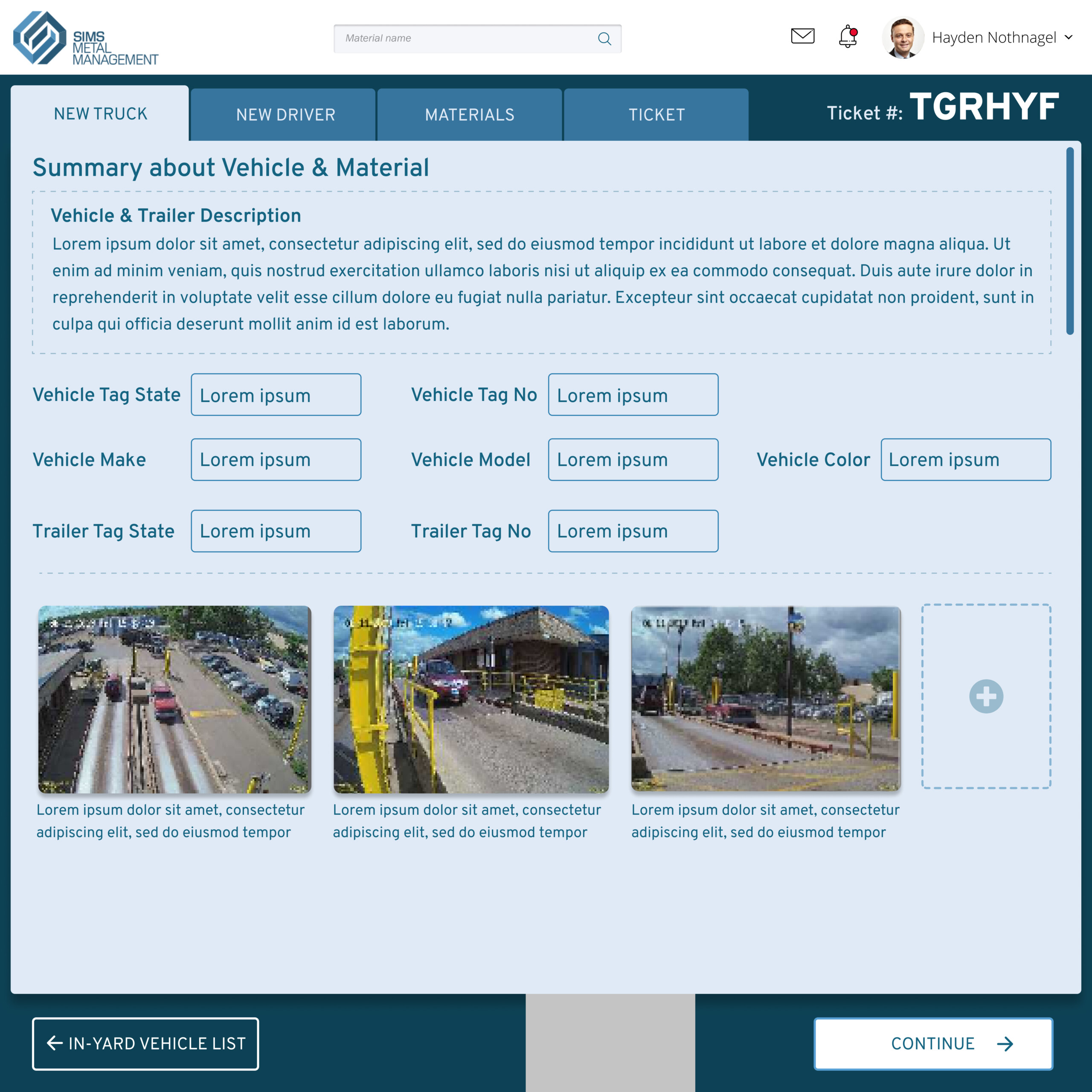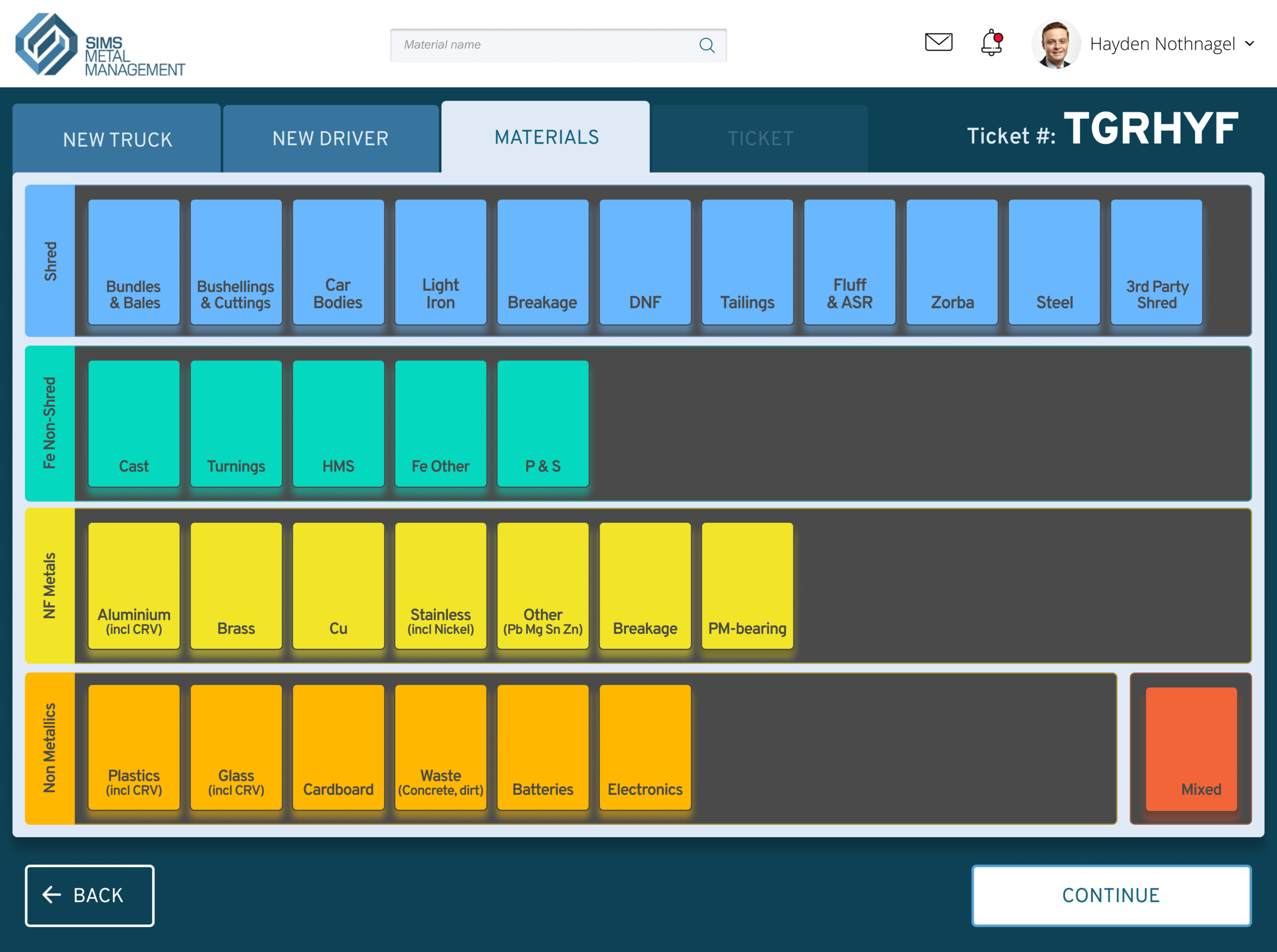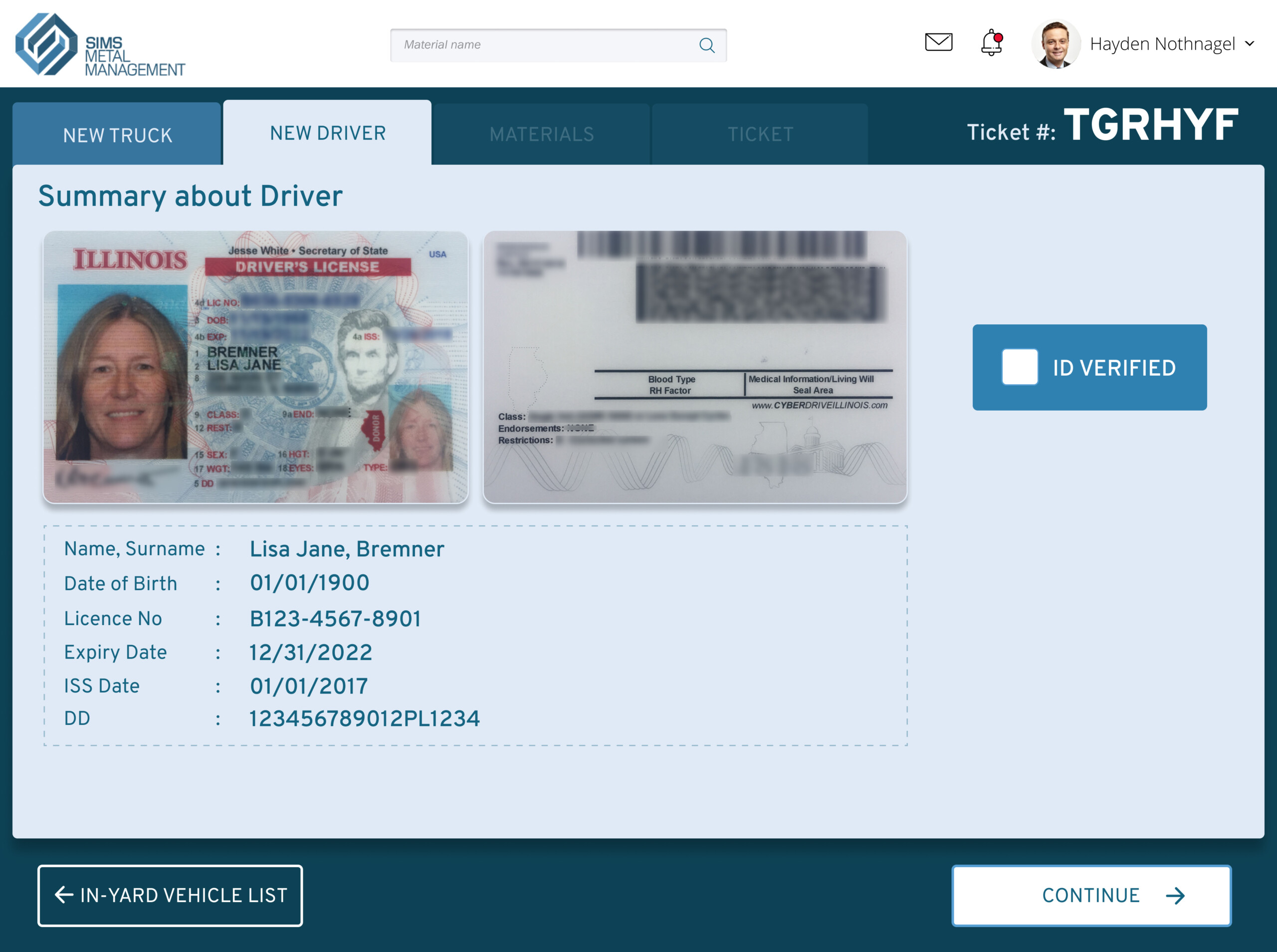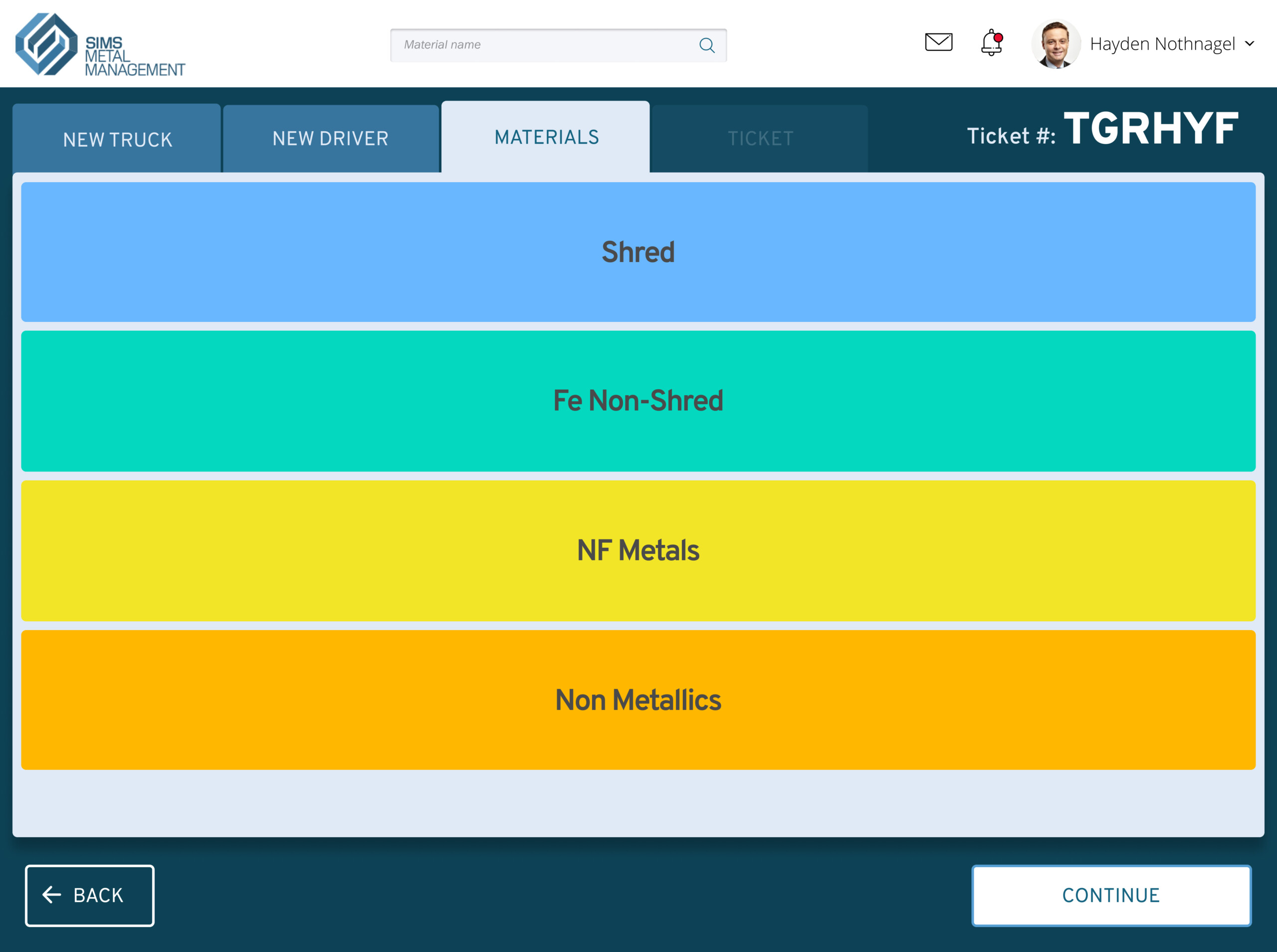SIMS Weighbridge – Waste Management Platform
Project Definition
Project Name: SIMS Weighbridge Waste Management Platform
Role: Lead UX/UI Designer
Tools Used: Figma, Sketch, InVision, UserTesting
Summary:
The platform was designed to automate and streamline waste management processes at weighbridges. It integrates real-time data collection, vehicle tracking, and regulatory compliance, improving operational efficiency and reducing manual errors. The solution included features for custom reporting, remote access, and integration with existing systems.
SIMS Weighbridge specialises in enhancing waste management operations, mainly focusing on the weighing and tracking of waste at weighbridges. The platform integrates with physical weighbridges to capture real-time data on vehicle weights, automating the process and reducing manual errors. A centralised dashboard displays key metrics like vehicle weights and waste volumes, using visual indicators to help users quickly identify issues.
Problem Statement
Waste management operations were facing inefficiencies due to manual data entry, inconsistent reporting, and compliance issues. The goal was to digitise the weighbridge processes and provide users with a unified platform for tracking, weighing, and managing waste efficiently, while maintaining regulatory compliance.
Through user interviews, surveys, and task analysis, key findings were highlighted, including errors from manual data entry at weighbridges, lack of real-time reporting for operational decisions, and challenges in managing compliance and reporting requirements. This research influenced the design of a real-time, automated platform that integrates with weighbridge systems to capture and track data more efficiently.
The Approach
Wireframes & Prototypes:
We developed low-fidelity wireframes to map the user journey, ensuring seamless integration between physical weighbridges and digital data collection. High-fidelity prototypes included mobile-friendly designs for remote access, with offline functionality for field workers.
- Real-Time Data Collection: Automated data capture at weighbridges reduced manual entry errors.
- Customisable Dashboards: A central dashboard displays key metrics, such as vehicle weight and waste types, allowing for quick decision-making.
- Offline Functionality: Mobile and tablet access allowed users to continue operations without network interruptions, syncing data when back online.
The platform tracks vehicles and categorises waste types, ensuring regulatory compliance and accurate reporting. Users can generate automated weighbridge tickets and customise data fields to suit operational needs, streamlining billing and invoicing processes. Designed for mobile and tablet use, the platform allows remote access and continues to function offline, syncing data once a connection is restored.
UI Design:
A clean, minimalistic interface with strong visual indicators helped users quickly identify issues. The design focused on ease of use for workers in the field, with large touch targets and simplified navigation for mobile devices.
Impacts
- Increased Efficiency: We reduced manual data entry errors, leading to improved accuracy and efficiency.
- Faster Reporting: Reports are now generated faster, enabling quicker and more informed decision-making.
- Improved User Satisfaction: Based on interviews, we received positive feedback about the ease of use and real-time capabilities.
- The project highlighted the significance of real-time data integration in waste management.
Data analysis tools provide insights through visual representations, while custom reports offer flexibility in meeting specific needs. Role-based access control ensures that users see only the relevant information for their tasks, enhancing security and accountability. The platform also integrates with existing systems like ERP and CRM, and scales easily to accommodate operations of any size. Real-time alerts notify users of critical events, enabling swift responses.
